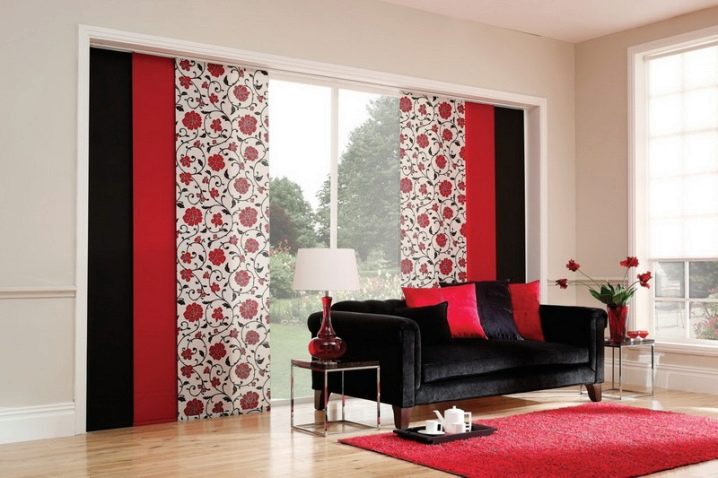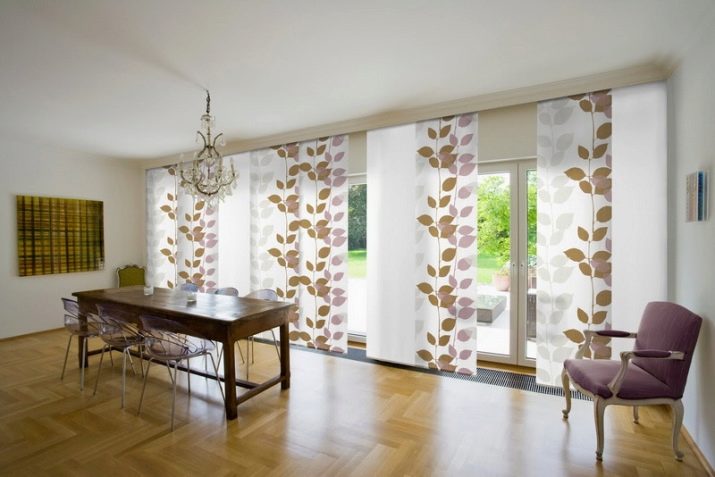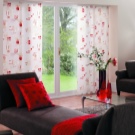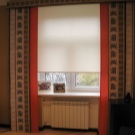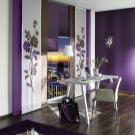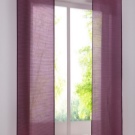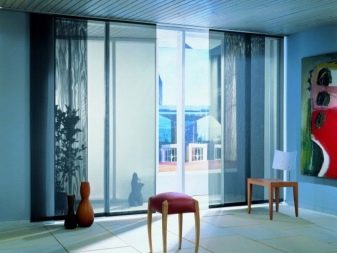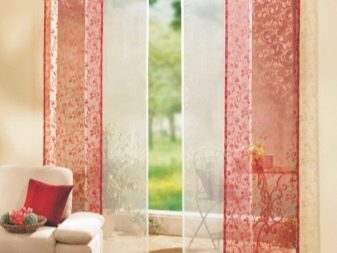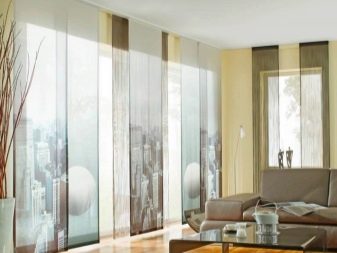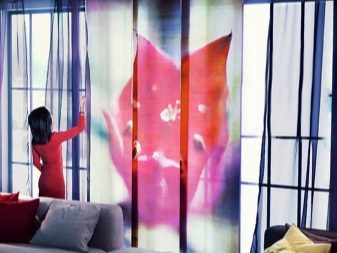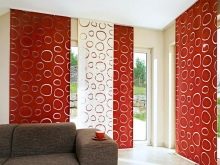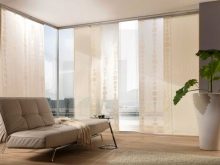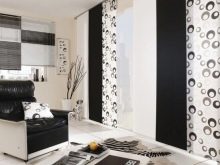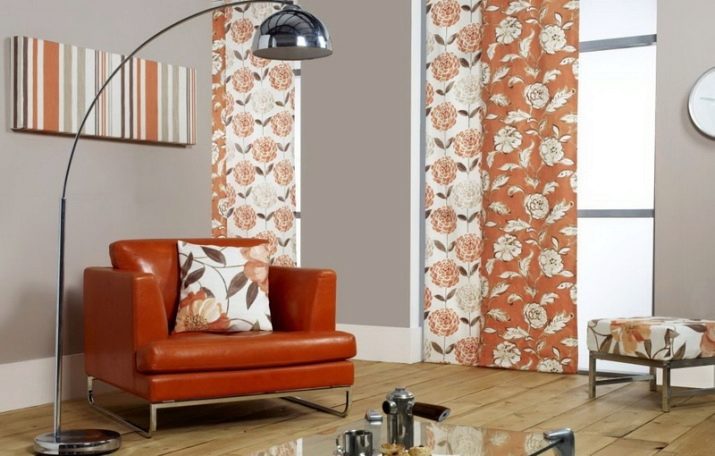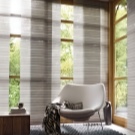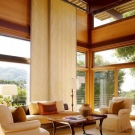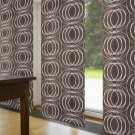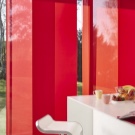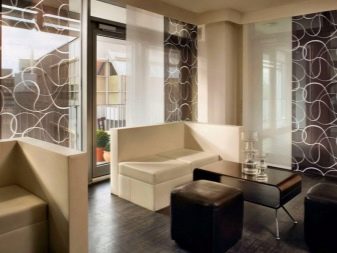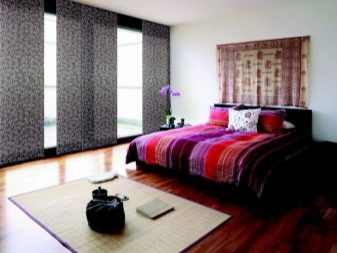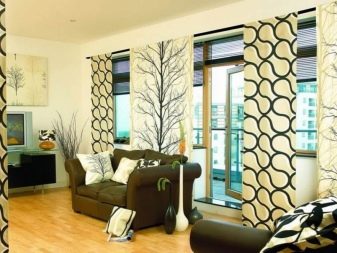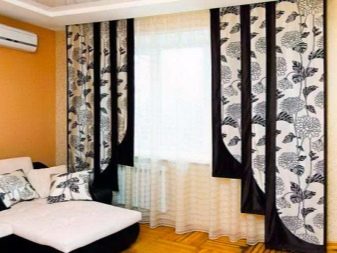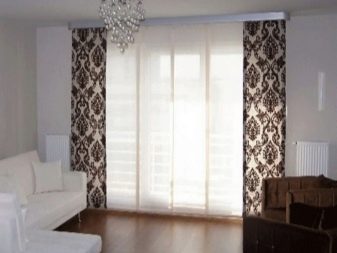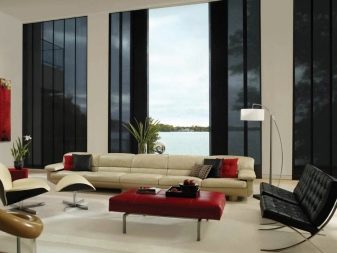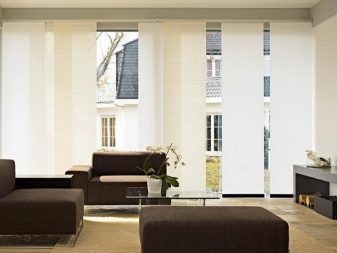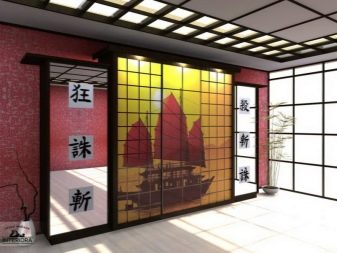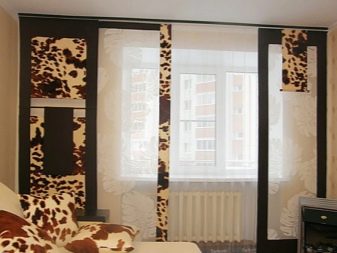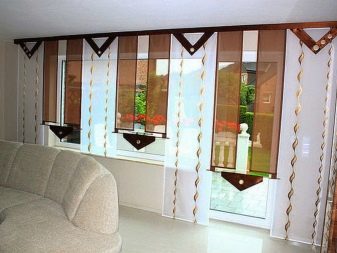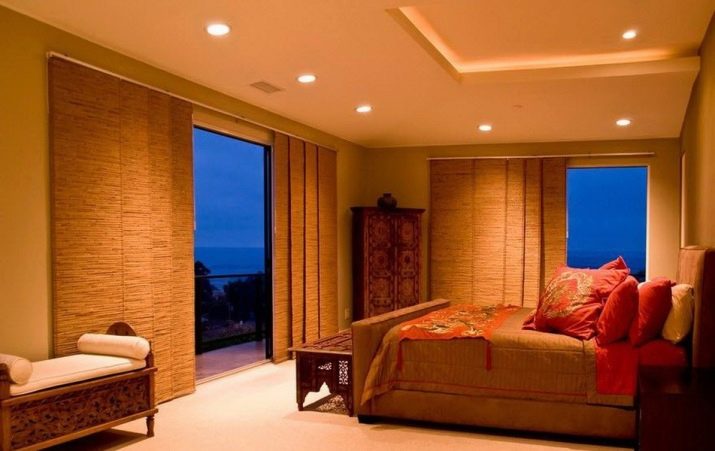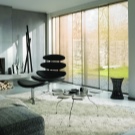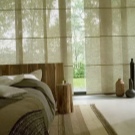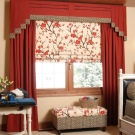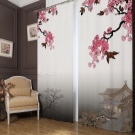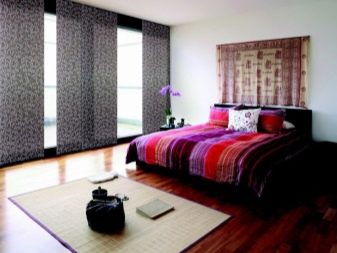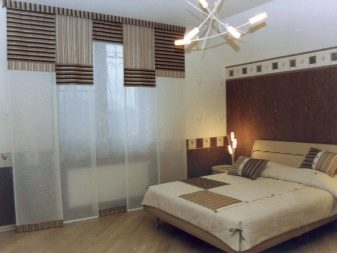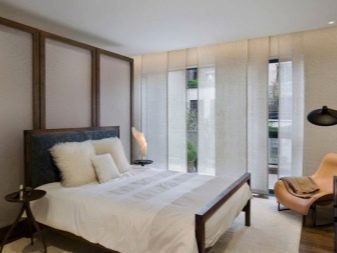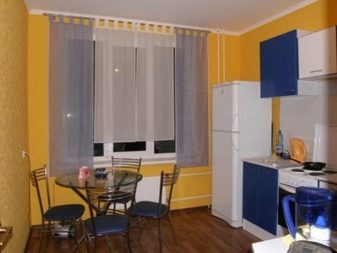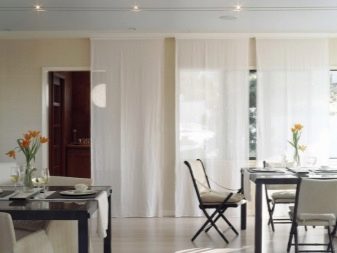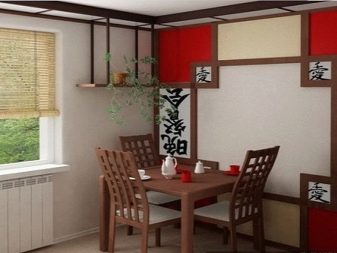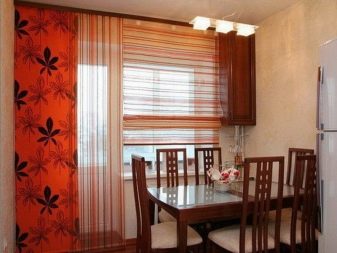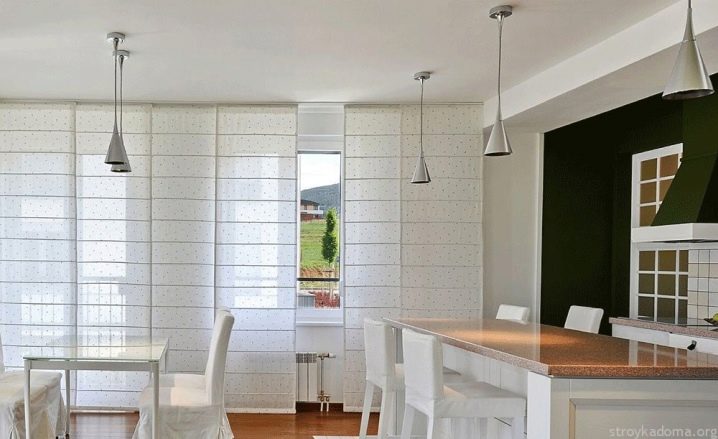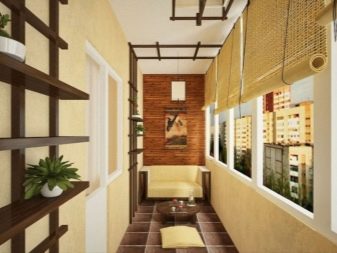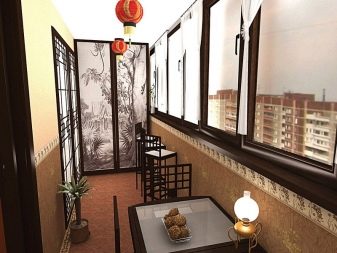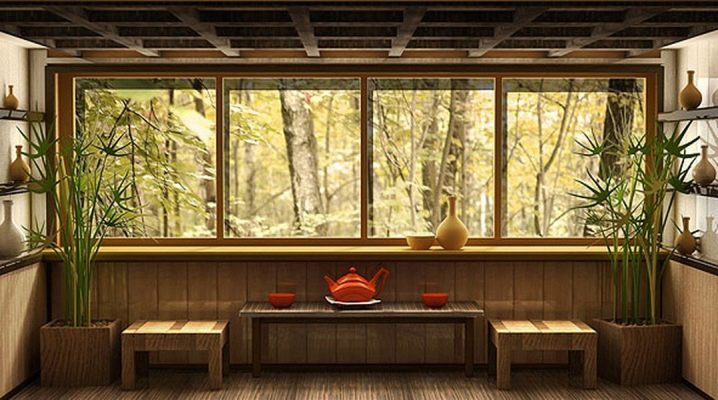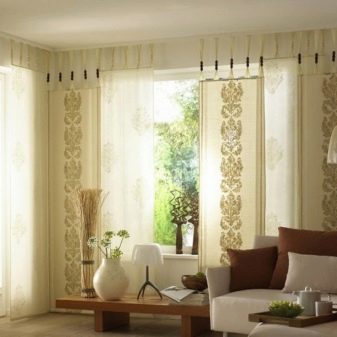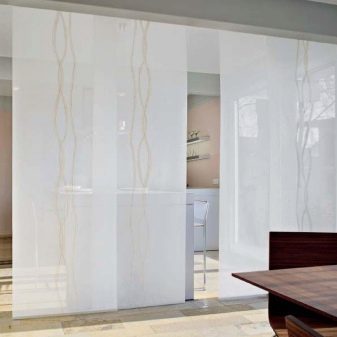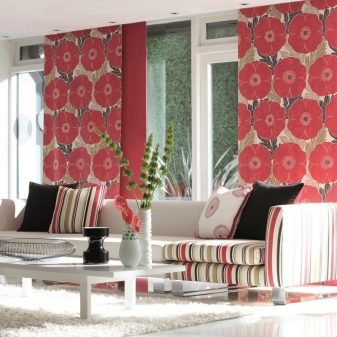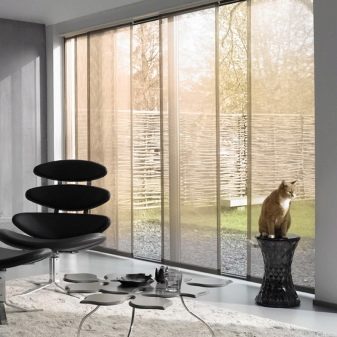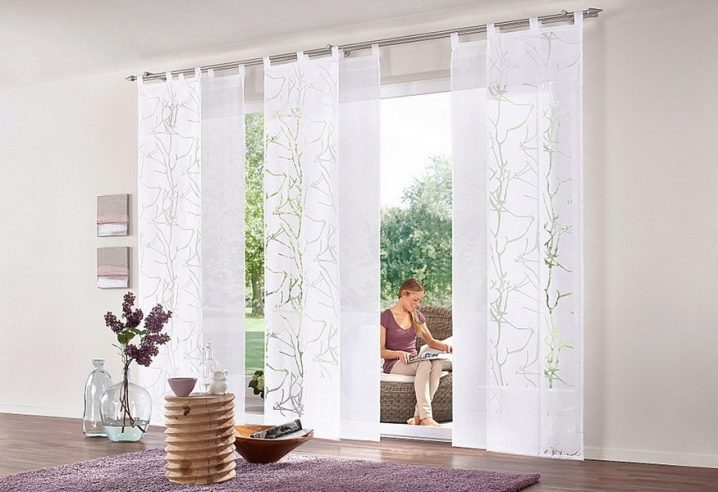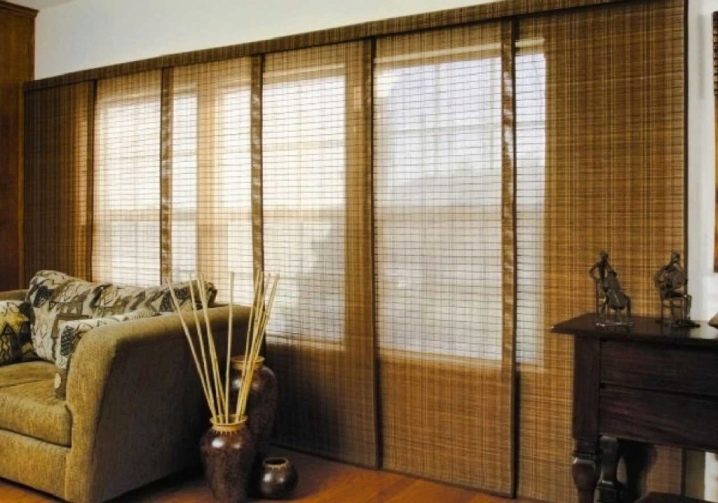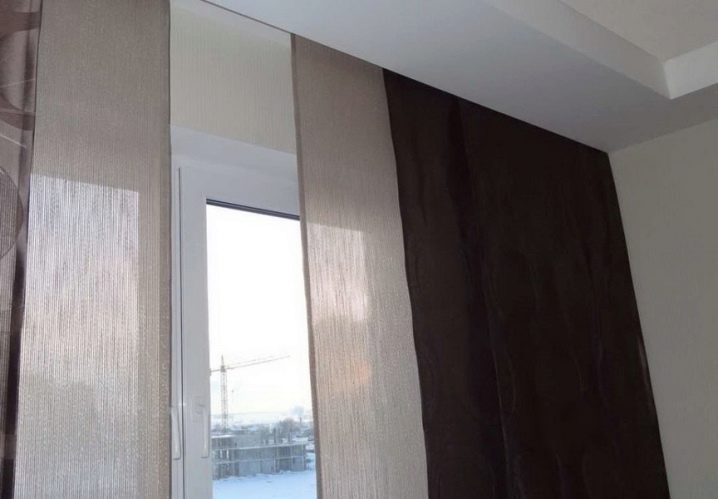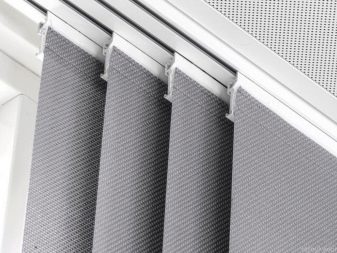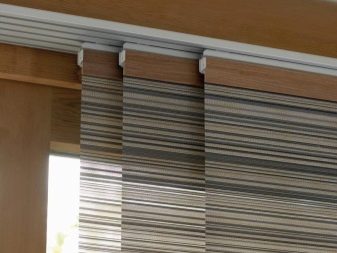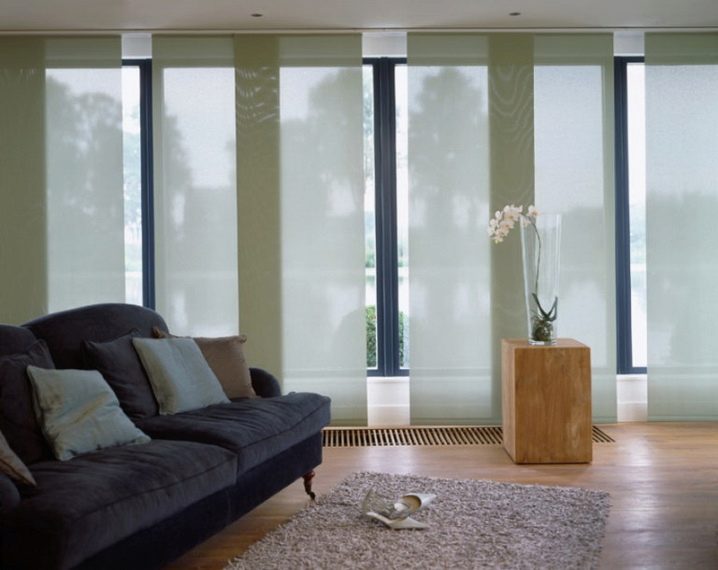Japanese curtains in the interior
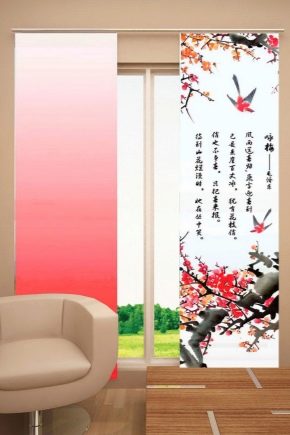
In the modern world, practicality and minimalism mean a lot. This also applies to the interior. Large, massive curtains with many folds are already out of fashion. Most decorators opt for options that combine practicality, style and beauty. These are the characteristics of the Japanese-style curtains.
Special features
Japanese panels in the interior of residential premises have been used for a long time, despite this, this technique is still fresh and relevant. This element attracts attention and brings in a piece of the charming, mysterious and captivating East. Panel curtains are used not only in houses and apartments, they can be met in hotels, themed restaurants and even offices.The Japanese culture of home improvement is built on harmony and conciseness, while the room looks attractive and cozy. Curtains act not only as a practical element, but also as an expressive decoration. In certain cases, they perform the task of emphasis.
Screen curtains in the Japanese style look like straight stripes of fabric. Their width varies from 50 to 60 centimeters. Vertical elements cover the entire window, from top to bottom. Fixed curtains to the ceiling rail. Particularly expressive Japanese blinds look at large windows, which occupy the space from ceiling to floor. Depending on the style, different panels may be included in one set, differing in texture and color. This technique diversifies the decor, making it more expressive.
Style
It is easy to guess that the curtains in the Asian style are suitable for the same style of interior design, however, in other directions they will also be quite appropriate.
Curtains will look great in the following styles:
- high tech;
- minimalism;
- avant-garde.
The main thing is to choose the right color and texture of paintings.The panels will add to the decor of elegance, expressiveness and emphasize the functionality, while occupying a minimum of space. Given the high popularity of the product, modern manufacturers offer a huge selection of models for every taste, color and wallet.
Registration
Despite the apparent simplicity in the Japanese interior, for a harmonious and practical combination of elements, it is necessary to think through every detail. Only with the right combination of all the elements, it is possible to achieve the desired result - to maintain the design in a single and holistic style. Japanese curtains are ideal for those who are looking for a profitable and easy way to dilute a boring interior, filling it with originality. Bright and panels with a pattern will stand out noticeably against the general background, attracting attention, and monochromatic stripes harmoniously blend into the overall interior and help soften bright colors.
To sustain the Asian style in the room where the panels hang, you need to get rid of bulky furniture, unnecessary parts and other things that litter the room.
Advantages and disadvantages
Design professionals and experienced consumers distinguish the following positive qualities of Japanese curtains.
- Unlike heavy and dense curtains with a lot of folds, dust, particles of dirt and other debris are practically not collected on the surface of the panels.
- Japanese curtains occupy a minimum of space and will look appropriate even in the smallest room.
- Cleaning curtains is very simple and easy. When heavily contaminated using standard household chemicals.
- Given the huge range, each consumer has the opportunity to choose the option with the necessary pattern or color. There are also various types of fabrics to choose from.
- Due to its length, the screens are able to completely close the window opening, from floor to ceiling. Especially beautiful they look on the panoramic windows.
- Affordable price, which is important for modern consumers.
- Practicality and ergonomics.
Professional designers have noted only one significant drawback of curtains of this style - this is a limited form. On sale you will find only rectangular or square panels. The first option is considered the most common and widely used.
For living room
As a rule, the living room is the largest location in the house.In this part of the room, contrasting Japanese panels combined with tulle or regular curtains will look particularly expressive and attractive. The main thing when making window openings is to choose the right textures that will harmoniously harmonize with each other. Panels and curtains made from fabrics that do not lose shape over time are ideal. These are textile materials such as satin, silk, cotton, cutting, flax and veil. Pay attention to the blinds in the Japanese style of organza, moire or taffeta.
To decorate and complement the interior of the living room, you can decorate the windows with Japanese sliding panels with a bright and expressive print.
From season to season, the following topics remain at the peak of popularity:
- Japanese characters;
- flowers;
- geometric figures;
- abstractions;
- cityscapes;
- birds and animals.
The main thing - to choose the right design. Too many decorative elements will only negatively affect the integrity and interior. Use the panel alternation technique.
To the bedroom
The atmosphere of comfort, peace and tranquility should reign in this room.Therefore, it is recommended to make a choice in favor of curtains painted in delicate, soft and pastel colors. If the plain options are not for you, pay attention to the stripes with a soft pattern or print. The most common option - the image of flowers or abstract lines.
Designers recommend avoiding an excessively large number of screens, especially if you are designing a small room. Two or three elements will be fuller enough. These can be panels of the same color or a combination of several harmonizing shades. If you wish, you can create an original composition by placing a strip with an image in Japanese or any other theme in the center, and place monochromatic panels along the edges. Get a stylish and attractive design, which will be an accent in the interior.
To the kitchen
If you make out the kitchen in the Japanese style, you must adhere to the traditions and standards of this direction. Harmony and concentration should reign in a room where food is received and cooked, otherwise food will not be beneficial. In this case, it is advised to use curtains with a gentle and unobtrusive print. If the style of the interior allows, decorate the windows with panels in natural,natural colors that are associated with nature: green, brown, shades of grass and fallen foliage.
For greater practicality and convenience, many choose short curtains. To look after curtains was easier and more convenient, choose screens for the kitchen from materials that are easy to clean. In eco-list the variants from special soft straw or bamboo sticks will look great.
To the balcony
Japanese curtains look great not only in the main rooms of the house. Such elements can be used to decorate balconies and loggias. These are small rooms where it is important to keep a maximum of space. When making small window openings, give preference to compact screens from the floor to the windowsill. In spacious rooms, as well as locations with wide windows, long lanes will look perfect.
If the balcony is located on the sunny side of the house and you want to get the most out of direct sunlight, choose curtains from dense and non-translucent materials. Color and texture can be varied, depending on personal preferences and the overall style of the design.
The choice of textile material
For tailoring curtains in the eastern style uses a variety of materials. The most widely used are cotton, hemp or bamboo and flax. These materials look great, are easy to clean and do not shrink. For the manufacture of these panels uses only natural textiles, but given the growing consumer interest, many manufacturers use artificial raw materials. Especially for connoisseurs of original design solutions trademarks offer curtains in the Japanese style of jute, bamboo plates, sisal and straw. If earlier such elements performed exclusively functional load, now it is a stylish accent in the decor.
Combination
When combining screens that differ in color and texture, watch for their harmony among themselves. They should not only complement each other, but also create a complete composition. Also consider combination with other decorative elements. With dense materials that perfectly keep and retain their shape, curtains made of translucent fabrics (organza, taffeta, chiffon) are remarkably combined. Reception of contrast is always relevant and expressive.
By the way, curtains made of natural fabrics collect much less dust compared to artificial panels. In the decorative directions on the basis of minimalism monophonic curtains are most relevant. If you want to make a certain expressiveness, place the curtains in the room with a neat and small print of neutral themes: flora, patterns, geometric shapes and abstraction.
Mount
To accommodate curtains in the Asian style is recommended to use a special eaves, which includes several rows of tires. Their number may vary depending on the wishes of the customer. The maximum value is 5 pieces. If this design is not at hand, the standard cornice is also suitable. Screens are fixed on each separate row. They may differ in height, color, texture and density of fabrics. Most often, fasteners are carried out using Velcro tape. You can also sew a regular tape to the edge of the panel and insert an additional element for shape and stiffness. At the bottom of each curtain is placed weighting.
The process of adjusting the paintings can be as follows:
- using a special stick;
- cord control, on analogy with vertical blinds;
- manual fixation;
- electronic system with remote control.
Eaves features
The width of the Japanese panels is from 50 to 60 centimeters. Given the size, manufacturers make special curtain rods for practical and convenient placement. If the room has wide or panoramic windows, it is recommended to order a frame according to individual drawings or make it yourself if possible. For the manufacture of cornices used dense plastic or acrylic. These are the most common and practical materials, however, metal structures will also look great.
Zoning
The Japanese blind curtain wall can become a practical, convenient and stylish element of room zoning. This is a profitable option for small apartments where it is necessary to separate a sleeping place from a worker or hide any element from the eyes, for example, a coat hanger. Such a partition will take up minimal space and cope with the task. Using the panels, you can divide the studio apartment into separate zones, enclosing, for example, sleeping from the kitchen or living room.In the nursery with the help of panels you can define the boundaries between the place for play, study and rest. On the basis of bedrooms, Japanese curtains are used to create an atmosphere of privacy and romance. If the style allows, panels can be decorated with lace.
Acceptance of zoning using Japanese curtains will be quite appropriate for kitchens, where it is necessary to separate the place of cooking from the dining area. And given the practicality of the panels and ease of maintenance - this is more than a profitable option.
How to fix the Japanese curtains with your own hands, see the next video.
